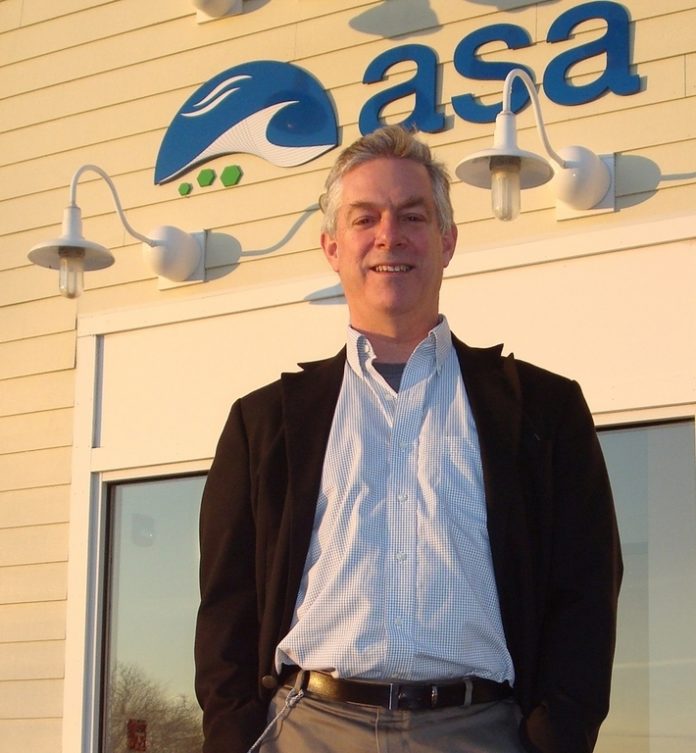
Applied Science Associates (ASA) last week announced that it has been tapped to lead a technical and economic feasibility study for the possible construction of the town of South Kingstown’s first utility-sized wind turbine.
ASA will lead a team of subcontractors, including Loria Emerging Energy Consulting, GZA Geo-Environmental, Maguire Group, Sustainable Energy Advantage and Rich Gross Electrical, on the project.
ASA Senior Principal Daniel Mendelsohn spoke with Providence Business News about that project, the return on investment and a similar project in Jamestown.
PBN: Could we start with the background of ASA?
MENDELSOHN: ASA just celebrated its 30th anniversary. We’ve been in South County the whole time and the company was started by a couple University of Rhode Island professors in the fluid dynamics and engineering departments. We’ve been focusing on solving engineering problems in the environment ever since.
It’s a consulting firm. We have about 40 people here in South Kingstown, 28 or so in an office in São Paulo, Brazil and about 10 on each coast of Australia.
PBN: Could you tell me about the just-announced contract?
MENDELSOHN: That is the North Kingstown School Department and a committee composed on various other groups in North Kingstown that are interested in developing a wind-power project and offsetting some of the municipal load. [They’re] particularly focused on the rather substantial load that of the two schools: the Hamilton Elementary School and the North Kingstown High School.
They have done some preliminary work, understanding what resources they have, and wanted to do a more detailed feasibility study to see the technical and economic feasibility of actually putting one of these things up. Are they going to throw a bunch of money into it and never see it pay off or are they going to throw a bunch of money into it and have it cover their electric bills and maybe make some money for the town.
PBN: Are these projects getting to a point where the return on investment is good enough that they will be popping up all over the place?
MENDELSOHN: Definitely. There are two answers to that question. The first part is that in the very recent past, the price of electricity has gone down a bit since its peak last year. That’s based on natural gas prices and other things that affect the market. But still, the electric loads are high enough and the quality and capacity of these wind machines are good enough that in a very good wind regime, they’re very economically viable for municipalities.
The way they work best is if you’re offsetting a load that you currently are spending a lot of money on. … That’s because there are two kinds of electricity prices, basically – the pricing that you would get from the electricity company, from the distributor, like National Grid, and that’s called the wholesale price. There’s also the retail price, which is what you and I pay when we buy it back from them. It’s basically a two-to-one ratio between the two. What’s sold into the grid would be worth about half as much if you sold it back into the grid instead of putting it behind your meter, or, nowadays, you could do something called “net metering” and offset an electric load. So the value jumps significantly if you can offset a load.
And those projects are definitely feasible under proper wind conditions. There are enough places around here, because we are near the coast, where the wind is substantial.
PBN: Has North Kingstown identified possible sites?
MENDELSOHN: They identified possible sites and on first look they might have some trouble with those sites. And that’s really what we’re here for; to assess the sites that they chose and maybe look at some other options because those aren’t the best sites that they could put these things at.
In places like Rhode Island, it’s not like Oklahoma or Iowa, where there are wide open spaces. There are a lot of people, a lot of development everywhere, so you have to be really careful about how you place these things so they don’t unduly impact any residents.
PBN: Are you working on any other projects like this?
MENDELSOHN: Yeah, we’re actually just finishing up a project for the town of Jamestown. We have, in the past, done the project for the town of Portsmouth. [At another firm,] I also did the Rhode Island winds project [for Gov. Donald L. Carcieri.]
In Jamestown, we looked at 10 different sites, narrowed it down to three and then did a detailed feasibility site on each of those sites. The sites – the last three – are Taylor Point, near where the bridge from Newport comes onto the island. There’s a wastewater treatment facility there and it’s always handy to have something like this next to a wastewater treatment facility – it can offset the load directly. … The second site is at Fort Getty. There’s quite a bit of space there and it’s relatively removed from any permanent residences. And the last site is Beavertail, where there’s clearly the best wind resource and the most amount of open space.










